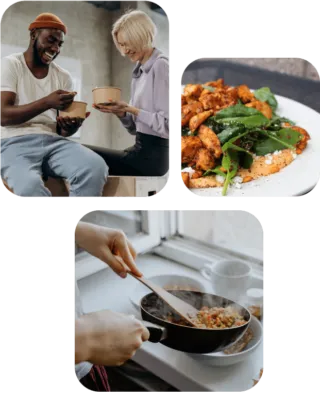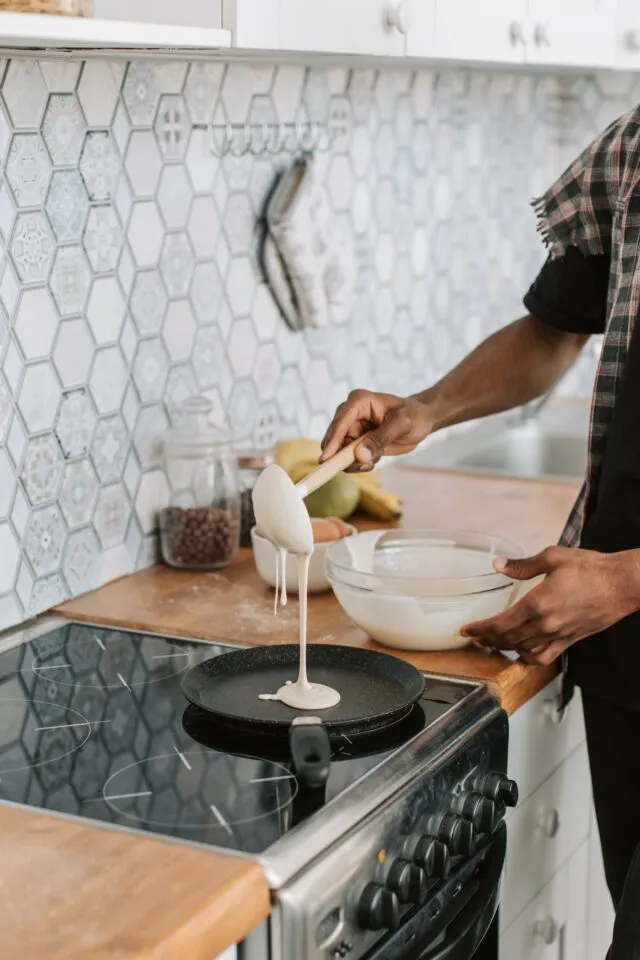
The Pancake Rule, explained
Why you can’t eat pancakes, tortillas, potato chips, or pasta during your 30-day elimination
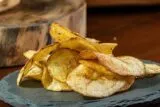
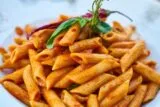
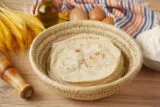
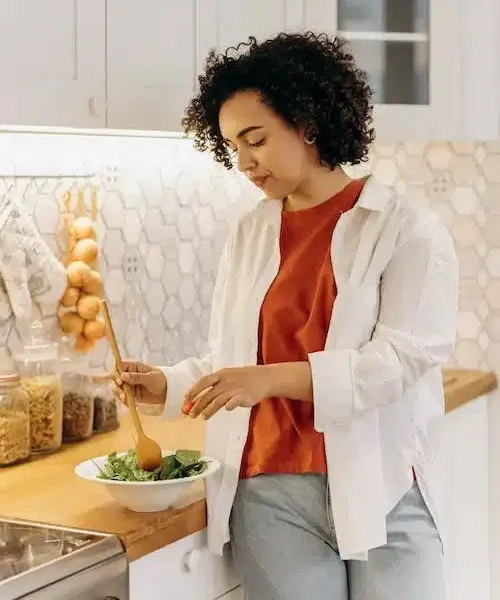
What is the Whole30 Pancake Rule?
Since 2010, the Whole30 has included a rule that says, “Do not recreate or purchase baked goods, ‘foods with no brakes,’ or treats even if they’re made with Whole30-compatible ingredients.”
We called this the Pancake Rule, because in the early days, that was the food participants tried to create the most often. Back then it was just an egg and a banana smashed together into a pancake-like patty. Now, grain-free recipes are far more elevated, featuring an assortment of alternative flours, and non-dairy milks.
Thanks to a few rules updates in 2024, you can now enjoy the egg-and-banana “recipe” on the Whole30. However, the Pancake Rule itself remains a cornerstone of the program, and plays an integral role in your Whole30 success. Here’s why you can’t recreate certain foods (not limited to pancakes) during your Whole30 elimination.
The history of the Pancake Rule, from co-founder Melissa Urban
This concept originated during my first Whole30 in April 2009. Barely a week in, I noticed myself scheming a way to recreate the sweet hit of my usual Dunkin Donuts Iced Caramel Latte. (Turbo-sized, with skim milk. Don’t judge.) I had been drinking one for breakfast for as long as I could remember, and I was really missing all 69 grams of sugar. After spending far too much time imagining the Whole30-compatible ingredients that could maybe give me a whisper of the same syrupy sweetness I was craving, I stopped and asked myself, ‘Melissa, what are you even doing?’
Up until this point, my Whole30 had already produced astonishing results. My energy was far more consistent. I no longer got hangry after two hours without a snack. I could actually remain alert and productive after lunch. And my sugar cravings (which had the intensity of a fire-breathing dragon) were significantly tamed. Was I really going to work this hard to recreate a drink that I know wasn’t serving me, and won’t even taste that good? Not wanting to mess up a good thing, I decided to learn to love my iced coffee black.
It was deeply unsatisfying—but only at first. By the end of the 30 days, my taste buds had dramatically shifted, my cravings had completely disappeared, and I never went back to sugar in my coffee. (Or my beloved Diet Pepsi, or those 10 p.m. pantry raids.) After this experience, I began to research the psychology of cravings and habits—and the Whole30 Pancake Rule was born.
“Was I really going to work this hard to recreate a drink that I know wasn’t serving me, and won’t even taste that good?”
The science behind the Pancake Rule
The Whole30 is designed for true habit change. If you want to tame your cravings, navigate stress without automatically reaching for food and alcohol, and confidently choose the foods that work best for you, the next 30 days can be a magical experience. But what are the chances of that happening if you continue to eat potato chips, French fries, cookies, and pizza for all 30 days? (Spoiler alert: Zero.)
The fastest way to negate the potential benefits of your Whole30 is to try to satisfy your cravings and recreate your favorite comfort foods with technically compatible ingredients.
Researchers have studied the role environmental cues like smells, sounds, visual cues, and taste can play in triggering cravings and relapses. They’ve discovered that for some alcoholics, smell cues alone may be enough to trigger cravings, and other environmental cues can elicit a conditioned response that likely play a role in relapses.
Many people come to the Whole30 report feeling addicted to sugar. Sugary, fatty, and highly processed foods light up the same reward centers in the brain as alcohol or nicotine, provoking a similar dopamine response in the brain. (Dopamine is a neurotransmitter that drives you to seek more of a reward.) This may make your food cravings vulnerable to the same environmental cues.
As such, the Pancake Rule assumes that during your Whole30, it will be much harder for you to reduce your cravings and change your habits if you spend all 30 days eating foods that look, taste, and smell just like the comfort foods you’ve been relying on.
In a June 2023 survey of more than 1,100 Whole30 alumni, 89% said the Pancake Rule played a significant role in their Whole30 success. Participants said embracing this rule helped them eliminate sugar cravings, break the cycle of emotional eating, and discover new coping mechanisms for stress, anxiety, and boredom.
“In a 2023 survey of 1,100 Whole30 alumni, 89 percent said their Whole30 would not have been as successful without the Pancake Rule.”
How the Pancake Rule helps you succeed
Embrace this rule and rack up the non-scale victories (NSVs)
The Pancake Rule
Do not recreate baked goods, pasta, cereal, chips, or fries with Whole30-compatible ingredients. Here are the specific foods that fall under this rule.

It’s time to change your life
You’re ready to break the cycle of craving, overconsumption, and the stress that usually follows. You’re ready to develop other techniques for self-soothing, showing yourself love, navigating pressure, and relieving anxiety.
We want to help you achieve all of those non-scale victories you’re after—eliminating cravings, improving digestion, increasing energy, sleeping better, alleviating pain, improving mental health, and feeling more self-confident.
The habit research built into the Pancake Rule is just one of the ways the Whole30 has changed millions of lives since 2009. Our welcoming community, library of free resources, thousands of delicious Whole30 recipes, nine Whole30 books, and hundreds of Whole30 Approved partner products are also here to support your journey.
Join our community and start changing your life with the Whole30. We can’t wait to hear your success story!
In a 2023 survey of 690 Whole30 participants, 94% of those with a goal of reducing cravings said they achieved that goal by Day 30.



Pancake Rule FAQs
Learn more about the Whole30 Pancake Rule with answers to these commonly asked questions
View All FAQsIn general, if the food in question is just vegetables or protein, you’re in the clear when it comes to the Pancake Rule. That means your jicama taco shells, apple chips, zucchini noodles, or egg white wraps are A-OK. These aren’t recreations, they’re whole food substitutions for corn tortillas, potato chips, traditional pasta, and whole wheat wraps. The same goes for egg “muffins,” sweet potato “waffles,” or salmon “cakes.” The Pancake Rule isn’t about the shape of the food or what you call it. Meatloaf cupcakes with mashed potato “frosting” is a delicious, kid-friendly Original Whole30 dinner.
References
Ron D, Barak S. Molecular mechanisms underlying alcohol-drinking behaviours. Nat Rev Neurosci. 2016 Sep;17(9):576-91.
Kozanian, O. O., Nedelescu, H., Kufahl, P. R., Mayford, M., & Weiss, F. (2022). Compulsive alcohol seeking and relapse: Central role of conditioning factors associated with alleviation of withdrawal states by alcohol. British Journal of Pharmacology, 179(17), 4330– 4343.
Katner SN, Weiss F. Ethanol-associated olfactory stimuli reinstate ethanol-seeking behavior after extinction and modify extracellular dopamine levels in the nucleus accumbens. Alcohol Clin Exp Res. 1999 Nov;23(11):1751-60.
G Di Chiara, A Imperato. Drugs abused by humans preferentially increase synaptic dopamine concentrations in the mesolimbic system of freely moving rats. Proc Natl Acad Sci USA 1988 Jul; 85(14):5274-5278.
Barnes TD, Kubota Y, Hu D, Jin DZ, Graybiel AM. Activity of striatal neurons reflects dynamic encoding and recoding of procedural memories. Nature. 2005 Oct 20;437(7062):1158-61. doi: 10.1038/nature04053. PMID: 16237445.
Smith K, Virkud A, Deisseroth K, Graybiel AM. Reversible online control of habitual behavior by optogenetic perturbation of medial prefrontal cortex. Proc Natl Acad Sci USA 2012 Oct;109(46): 18932-18937.















